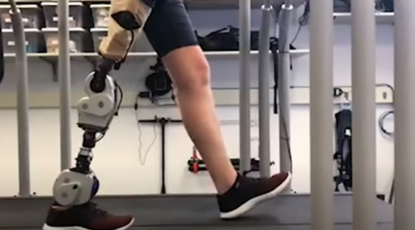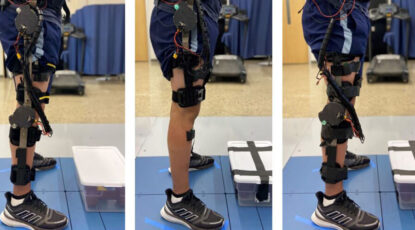Innovation
-
21 research takeways from ’21
Pandemic-related stories may dominate the news, but these other significant findings and developments at U-M also deserve attention.
-
1,000-cycle lithium-sulfur battery could quintuple electric vehicle ranges
A new biologically inspired battery membrane has enabled a battery with five times the capacity of the industry-standard lithium ion design to run for the thousand-plus cycles needed to power an electric car.
-
U-M forms collaboration to advance quantum science and technology
U-M has formed a collaboration with Michigan State University and Purdue University to study quantum science and technology, drawing together expertise and resources to advance the field.
-
Spray-on coating could make solar panels snow-resistant
Researchers have demonstrated an inexpensive, clear coating that reduced snow and ice accumulation on solar panels, enabling them to generate up to 85% more energy.
-
U-M, Humotech partner to bring open-source bionic leg to research labs
First released in 2019, the open-source leg’s free-to-copy design is intended to accelerate scientific advances by offering a unified platform to fragmented research efforts across the field of bionics.
-
$2M to replace fossil fuels with solar power in fertilizer production
U-M researchers will study the effectiveness of a new ammonia production process aimed at reducing greenhouse gas emissions. Bringing the process directly to farmers could cut environmental costs by reducing transportation requirements.
-
Energy from waste: Cow-inspired biodigesters
A proposed energy-production system based, in part, on cow stomachs could generate 40 percent more power from municipal waste streams, at a 20 percent reduced cost — and provide a viable alternative to sending waste to landfills.
-
Exoskeletons to assist workers, the elderly, etc.
U-M is developing a solution for the one in eight Americans who faces a mobility disability. A $1.7 million grant from the National Institutes of Health is funding the creation of a modular, powered exoskeleton system that could be used on one or multiple joints of the legs.
-
Individual finger control for advanced prostheses demonstrated in primates
In a first, a computer that could fit on an implantable device has interpreted brain signals for precise, high-speed, multifinger movements in primates. This is a key step toward giving those who have lost limb function more natural, real-time control over advanced prostheses.










